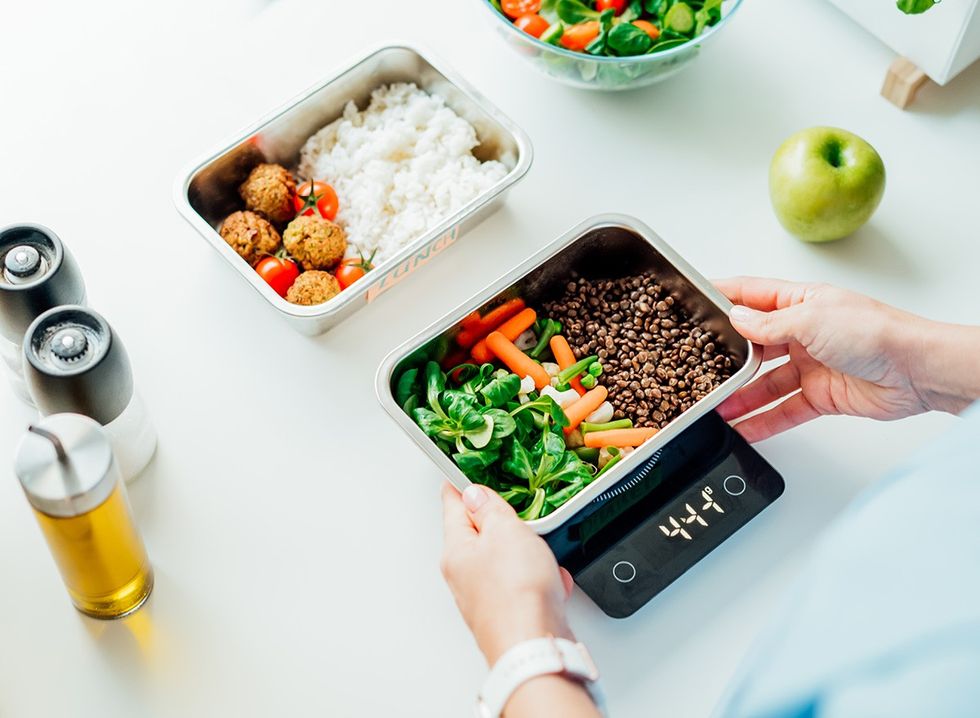Struggling to find time for lengthy workouts? You’re not alone, and the good news is, you may not need hours in the gym to jumpstart your weight loss journey. According to certified clinical nutritionist Autumn Bates in her popular YouTube video, a strategic walking routine could be the game-changer you're looking for. Autumn's approach revolves around optimizing fat-burning through carefully timed walks that work with your body's natural rhythm throughout the day. Whether you're a morning person or find it easier to move during lunch breaks, Autumn's plan is designed for anyone who wants to maximize fat loss without sacrificing too much time or energy.
Walking, as Autumn explains, has the unique ability to tap into the body’s fat stores, especially during certain times of the day. Her three-part walking schedule will help you keep your metabolism revved up from the moment you wake up until you head to bed. Even better, you don’t need any special equipment—just your feet, a good pair of shoes, and some dedication. Joining Autumn’s expert advice is Body Network’s Yaa Boakye, Registered Dietitian Nutritionist (RDN), Licensed Dietitian Nutritionist (LDN), and Certified Personal Trainer (CPT), who provides additional insights into how walking can be tailored to meet your individual needs, ensuring both immediate results and long-term sustainability.
Ready to start walking your way to a healthier, leaner you? Let's dive into Autumn Bates' fat-melting walking routine and discover how just a few simple steps can make all the difference.
The Morning Walk: Capitalize on Your Body's Natural Fat-Burning State
In her video, Autumn emphasizes the importance of a morning walk: "In the morning, the body is in a naturally fasted state. This means that from overnight of not eating, the body is naturally going to be burning fat as fuel."
She recommends:
- 15-30 minute walk first thing in the morning
- Before coffee or breakfast
- Preferably outdoors
"Walking outside is preferred if you are looking to maximize fat burning," Autumn explains. "Being outside, especially if you live by a park or an ocean or a lake or a river, helps to expose your body to something called negative ions. And this can naturally help to decrease the stress hormone cortisol."
The Science Behind Morning Walks
Body Network’s expert, Yaa Boakye, RDN, adds scientific context: "Research has found that both treadmill walking and brisk walking effectively reduce central obesity in men and women who are overweight or dealing with obesity. Women may burn more calories per step, while men may have a higher overall energy expenditure due to greater body mass."
RELATED: The 4 High-Protein Breakfast That Torches Stubborn Fat, According to Top Trainer
Daytime Walks: Break Up Sedentary Periods
In her video, Autumn suggests incorporating short walks throughout your workday:
- Get up every hour for 1-2 minutes
- Walk around your house or office
- Aim for about 2000 extra steps during an 8-hour work period
"The less often that we get up, even if it's just getting up for one or two minutes an hour, the less we're contracting our muscles and the less insulin sensitive we start to become," Autumn notes.
Lunchtime Bonus Walk
If possible, add a 15-minute walk after lunch. Autumn explains in her video, "When you're walking or when you're contracting your muscles, it helps to soak up excess glucose from the blood supply, making so you don't need to pump out as much insulin, which is that storing hormone."
Evening Walk: Enhance Sleep Quality for Better Fat Burning
Autumn recommends a short walk after dinner:
- 5-15 minutes long
- Preferably outdoors
"Walking can not only help with absorbing that excess glucose, it can also help to boost the quality of your sleep, which further helps to maximize fat burning," she states.
The Long-Term Benefits of Walking
Boakye emphasizes the sustainability of walking for weight loss: "Walking is not only effective for initial weight loss but also plays a crucial role in long-term weight maintenance. Research indicates that individuals who engage in regular walking are more likely to sustain their weight loss over time."
RELATED: 11 Quick Protein-Packed Breakfasts to Curb Cravings You Can Make in 5 Minutes
Maximizing Your Walking Routine
To enhance your walking routine, Boakye suggests:
- Incorporate interval walking
- Walk on an incline
- Add strength-building exercises
- Aim for 7,000 to 10,000 steps per day
Walking Really Can Help You to Lose Weight
By following this strategic walking schedule, you can harness your body's natural fat-burning potential throughout the day. Remember, consistency is key. As Boakye notes, "Walking is an incredibly effective and sustainable tool for weight loss. It burns calories, increases fat metabolism, and is easy to maintain long-term due to its low impact and accessibility." And if you enjoyed this article, don't miss 12-3-30 Walking Method: 20 Proven Tips to Lose Weight Faster.

















 Shutterstock
Shutterstock Shutterstock
Shutterstock giannagfit/Instagram
giannagfit/Instagram Shutterstock
Shutterstock Shutterstock
Shutterstock Shutterstock
Shutterstock dietdivatara/Instagram
dietdivatara/Instagram
 Courtney Black/Instagram
Courtney Black/Instagram

 I'm a Nutritionist and These 9 High-Protein Snacks Keep My Clients Full While Losing 50 Pounds
I'm a Nutritionist and These 9 High-Protein Snacks Keep My Clients Full While Losing 50 Pounds
 Shutterstock
Shutterstock 2. Processed FoodsShutterstock
2. Processed FoodsShutterstock Shutterstock
Shutterstock Shutterstock/Prostock-studio
Shutterstock/Prostock-studio Shutterstock
Shutterstock Pro TipsShutterstock
Pro TipsShutterstock Shutterstock
Shutterstock Shutterstock
Shutterstock Shutterstock
Shutterstock Shutterstock
Shutterstock Don’t Drink as Much AlcoholShutterstock
Don’t Drink as Much AlcoholShutterstock Most Women on GLP-1s Are Making a Few Common MistakesShutterstock
Most Women on GLP-1s Are Making a Few Common MistakesShutterstock Soda and Sugary DrinksShutterstock
Soda and Sugary DrinksShutterstock Shutterstock
Shutterstock Eat BreakfastShutterstock
Eat BreakfastShutterstock And Improve Insulin SensitivityShutterstock
And Improve Insulin SensitivityShutterstock Belly Flab Strip Tip: Sugar and Fat Calories Leave Its Mark on Your BodyShutterstock
Belly Flab Strip Tip: Sugar and Fat Calories Leave Its Mark on Your BodyShutterstock Shutterstock
Shutterstock The Drugs Mimic the GLP-1 Hormone Naturally Produced by the BodyShutterstock
The Drugs Mimic the GLP-1 Hormone Naturally Produced by the BodyShutterstock 3. Deep-Fried ItemsShutterstock
3. Deep-Fried ItemsShutterstock